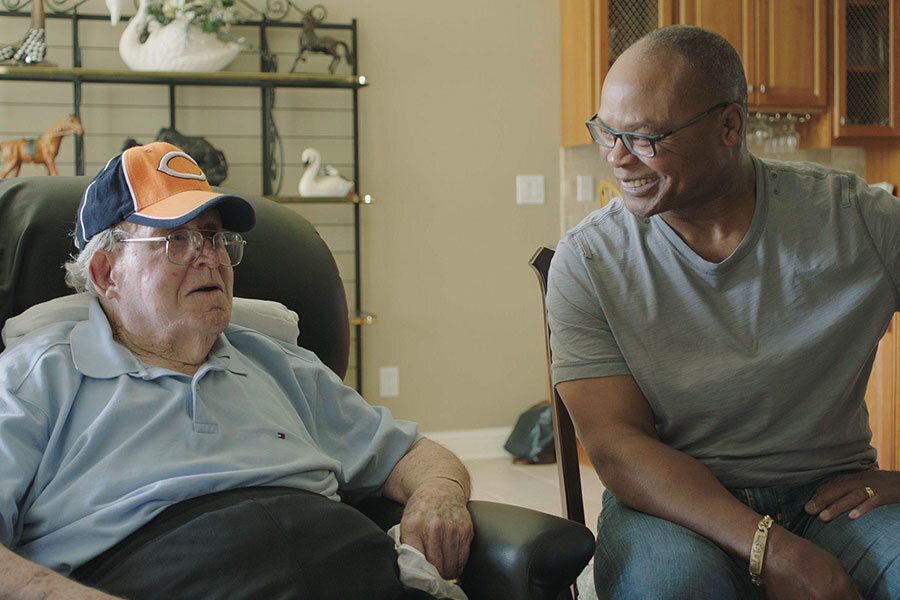Super Bowl 50: A look back at the '85 Chicago Bears
Loading...
How big is the 50th anniversary of the Super Bowl? So big that for the Feb. 7 game at Levi’s Stadium in Santa Clara, Calif., the National Football League saw fit to drop the Roman numerals: It’s Super Bowl 50, not Super Bowl L.
The NFL is taking a characteristically hyperbolic approach to the golden anniversary of its big game, an event that long ago dwarfed everything else in sports – and in American entertainment. It consistently ranks as the most-watched show of the year.
TV specials and retrospectives, coffee table books, and endless website "listicles" celebrating the 50th Super Bowl are among the most obvious signs of the pop culture powerhouse the NFL championship game has become. At many of the 31 stadiums around the league this past season, the 50-yard lines were marked with golden numerals and a golden logo shield to hammer home the point.
Amid all the 50s and Super Bowl cachet, a team and game from 30 years ago have roared back into the picture. In January 1986, the 1985 Chicago Bears – arguably the greatest team of any single season – capped their historic run by shredding the New England Patriots 46-10 in Super Bowl XX.
On Feb. 4, ESPN will unveil a new documentary about that memorable team and season as well as interviews with the principals and snapshots of their lives since then.
Titled “The ’85 Bears,” the movie is part of ESPN’s “30 for 30” series. Vince Vaughn, who grew up in Lake Forest, the Chicago suburb where the Bears practice, is an executive producer (along with Peter Billingsley of “A Christmas Story” fame) and narrates the documentary.
People who cared little for pro football had to work hard to avoid those Bears. Jim McMahon, the punk-rock quarterback, became one of the few athletes to appear on the cover of Rolling Stone when the rock magazine featured McMahon for its March 1986 issue, soon after the Super Bowl victory. (It remains the only Super Bowl win in team history.)
Before that, what started as a goofy rap song recorded for charity, at a time when hip-hop was still foreign to almost everyone beyond adolescence, morphed into a national phenomenon with a companion video of hulking players trying to dance and lip sync. “The Super Bowl Shuffle” became a pop hit and garnered a Grammy nomination.
“The NFL back then is not the NFL as we know it today,” says Jason Hehir, director of the Bears documentary. “Popularity was flagging a bit. It was coming off a strike year in 1982, television ratings were down, and (NFL executives) were desperate for characters to market. All of [a] sudden you come into the age of cable television, music videos” — and the quirky, brutal Bears pulled all of those disparate elements together.
Mr. Hehir says the characters came straight out of central casting. A gruff, iconic coach in Mike Ditka, who happened to be at constant odds with his quarterback, McMahon; a graceful Hall of Fame running back in Walter Payton; a wild-man defense that annihilated opposing offenses; and, of course, a gap-toothed 350-pound rookie lineman named William Perry who had a perfect nickname: “The Refrigerator.”
The combination of success, bravado, and tension – Ditka and his defensive coordinator, Buddy Ryan, bickered publicly and often – made the Bears into celebrities.
“The ’85 Bears were like the Beatles,” said Rich Cohen, author of “Monsters: The 1985 Chicago Bears and the Wild Heart of Football.” Their larger-than-life personas and dominating one-loss championship season pushed the NFL to a new level of celebrity on and off the field, he believes. “There was a different Bear for every kind of fan.”
Hehir’s documentary tells their rich, triumphant, and, at times, tragic stories. Payton died in 1999 after battling liver disease while his former teammate Dave Duerson, who suffered from brain damage associated with repeated blows to the head on the playing field, committed suicide in 2011. Through it all, the roguish players, now in late-middle age, retain a juvenile charm that, for many, will be hard to resist.





